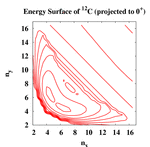

Here’s what I did:Ĭlearly, the black circles are drawn on top of the red dots, so we need to draw them right after their red dot. I resolved things by hacking the postscipt file with a python script. The title keyword within the plot command specifies the text to be displayed in the legend. You can also set it directly to one point as we have done it here in order to have enough space between the key and the tics. In addition to that, its position can be specified by set key top left etc. Generally the legend is enabled by the set key command. P(x) title 'Theory' with lines linestyle 1 Title 'Power' with yerrorbars linestyle 2, \ In the last plot we will add theoretical data and a legend to the graph: Plot 'battery.dat' using 1:($2*1000):($4*1000) with yerrorbars linestyle 1įor achieving this we have to set brackets around the expression and reference the column data with $column_number. We can avoid the set format command in the last plot by directly manipulating the input data:
Gnuplot persist code#
4 Plot of the data from battery.dat with y errors ( code to produce this figure) Therefore we add a second line to the plot command to combine the points with a line. Using the yerrorbars plotting style it is not possible to combine the points by a line. Since we want to plot the y errors and the data we need three columns in the first line of the plot command. Then in the plot command using tells gnuplot which columns from the data file it should use. Therefore we set the format option to tell gnuplot to use “mantissa to base of current logscale”, see gnuplot’s documentation.

The power values are stored in Watt in the data file, but only has values lower than 1. Plot 'battery.dat' using 1:2:4 with yerrorbars linestyle 1, \ Here we want not only to plot the data, but also show the error for the y value (the data is stored in the format: x, y, xerror, yerror). Therefore we use the battery.dat file from gnuplots demo files that contains data about the dependence of the power of the battery on the resistance. 3 Plot of the data from plotting_data3.dat in two different styles ( code to produce this figure)Īnother common task is to plot data with errorbars. Currently forces.dat needs to be in same directory (can easily change to your desired relative directory), and forcesPlot is called from the shell to generate the plot.Fig. The numbers for each force and moment as variables are just for reference they are the indexes of each of the force/moment pressure/viscous component as listed in order on each line in the forces.dat file. You need to enter in by line what you want to plot in 'forcesProcess' following the command 'plot'.

The 'truncationFactor' cuts off the first (number of lines in forces.dat)/truncationFactor lines in the forces.dat file this is useful for transient simulations where the first few data points may be unphysically high and mess up the plot scale. There are some constants and stuff that are my own, and shouldnt be too hard to tweak for your own usage. It plots whatever forces.dat file is in the same directory as the script. I did not find a script for plotting the force file outputs (specified in controlDict), so I made one and am sharing it. Here is a script for plotting force files in Gnuplot.


 0 kommentar(er)
0 kommentar(er)
